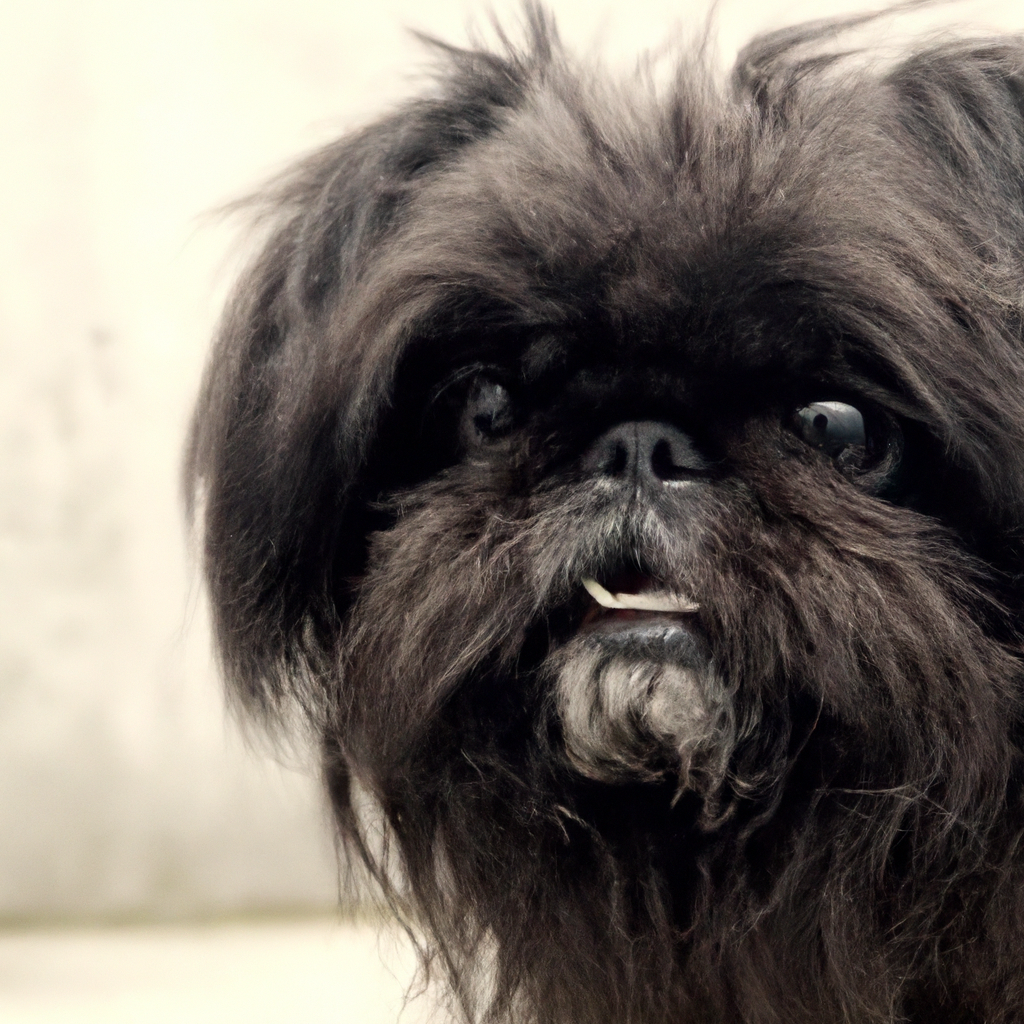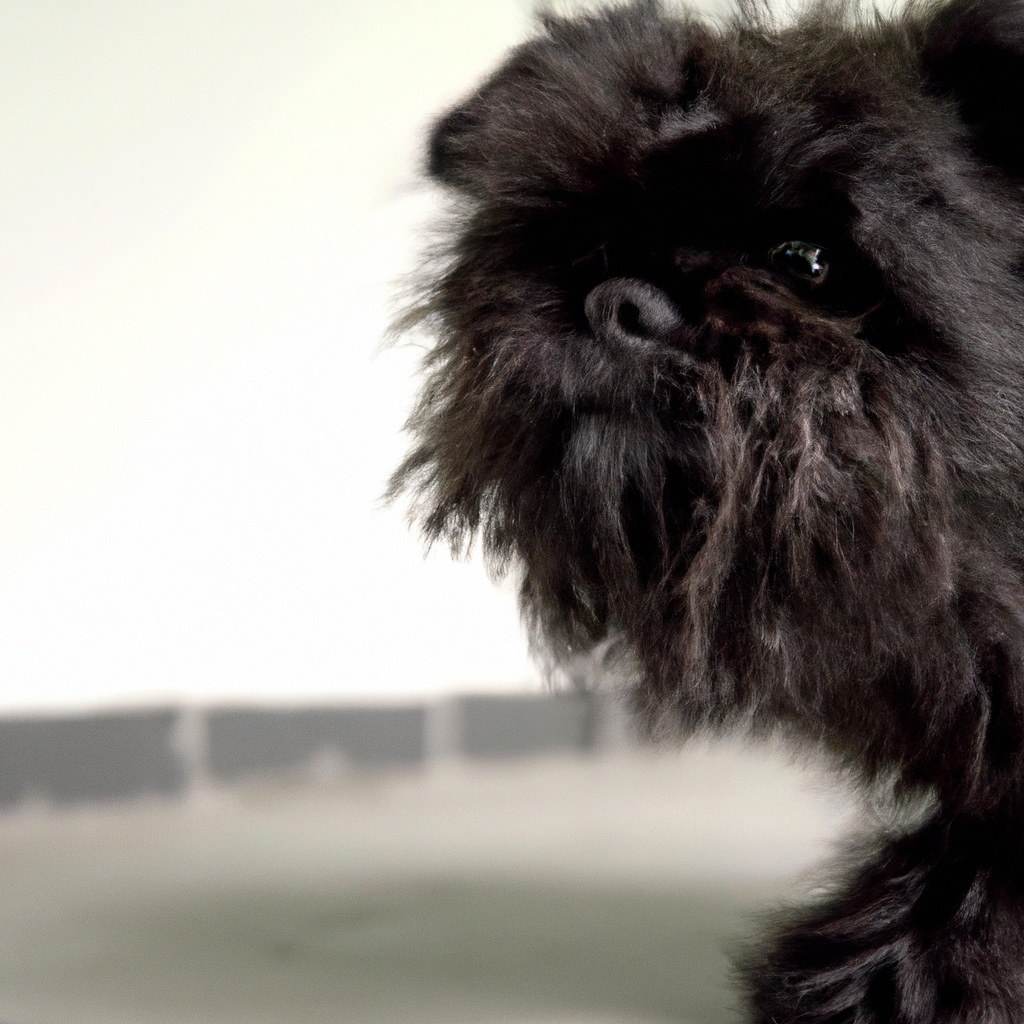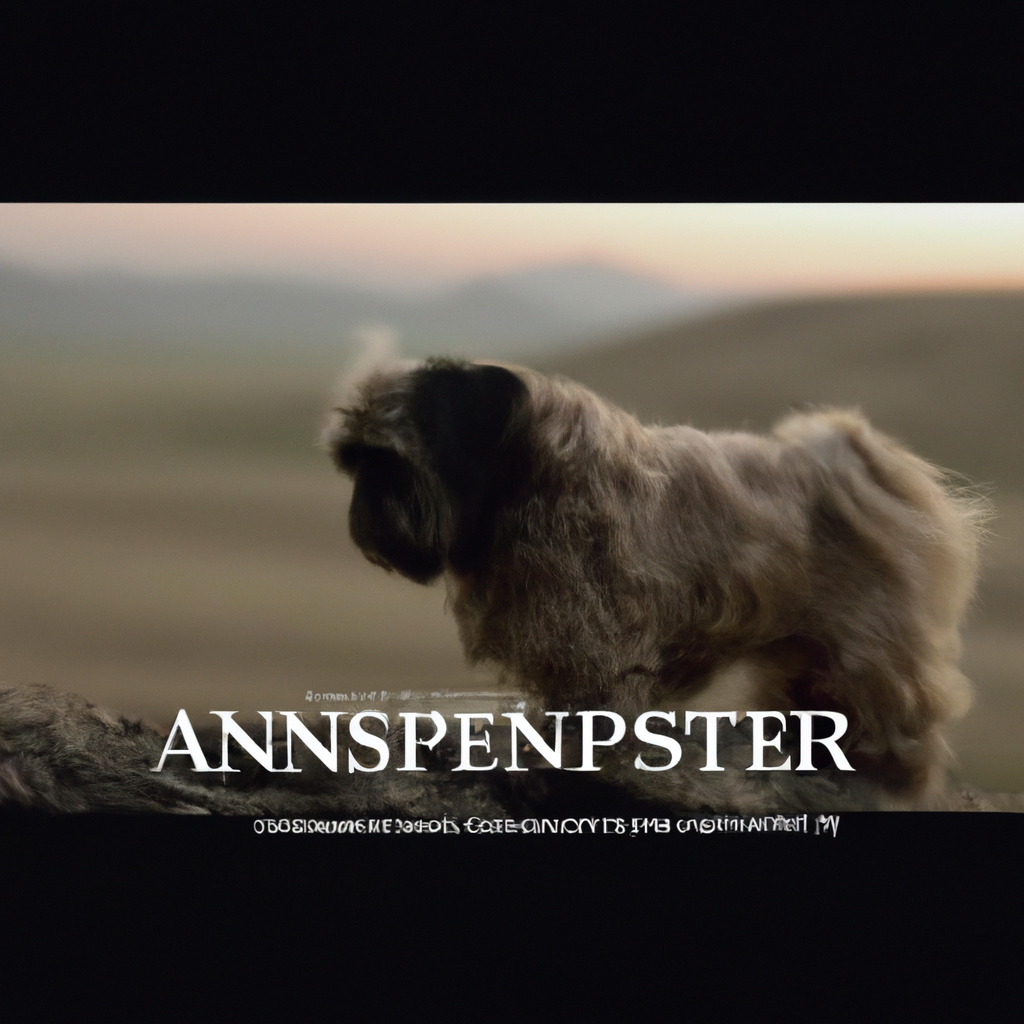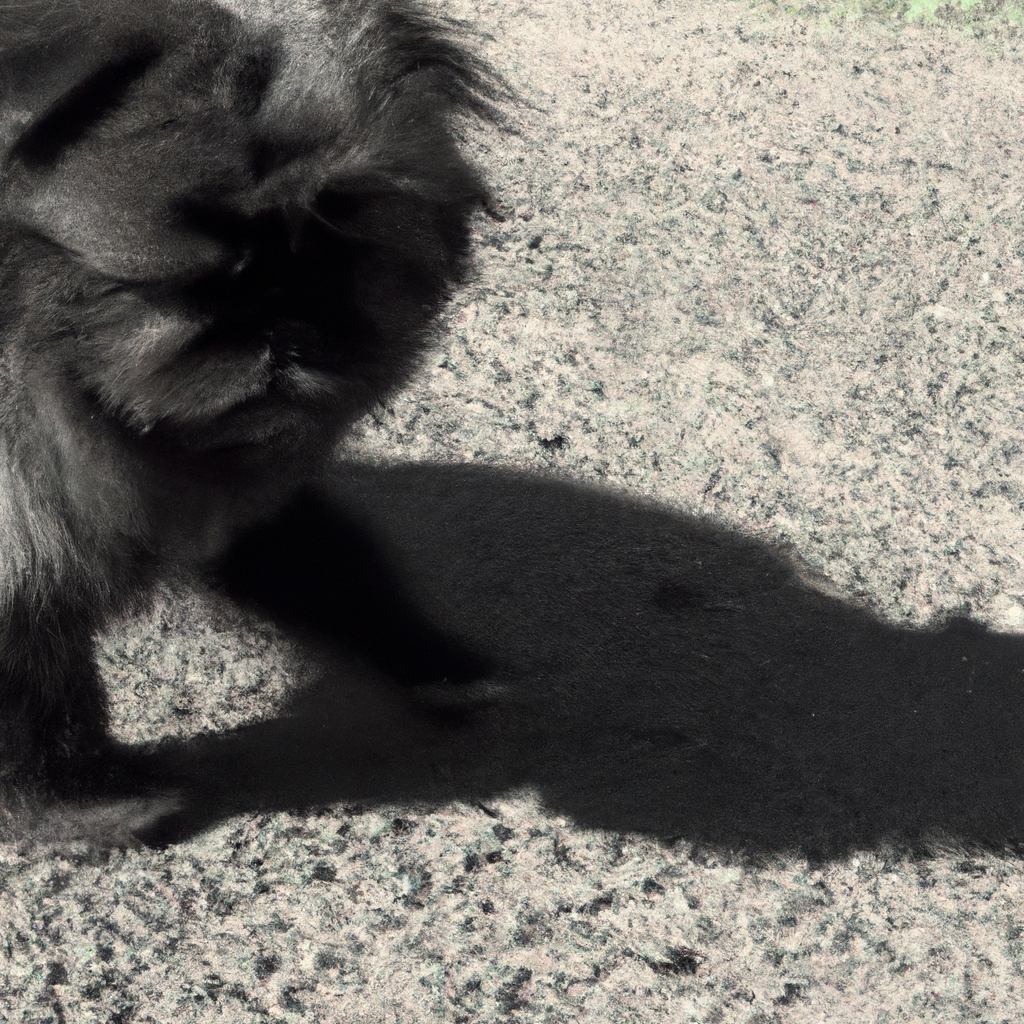Affenpinschers, also known as “Monkey Terriers”, originated from Germany. They were initially bred in the 17th century to work as ratters, helping to control rodent populations in homes, stables, and shops. Over time, they were bred to be smaller for domestic companionship. The name “Affenpinscher” translates to “monkey-like terrier” in German, reflecting their distinct appearance.
The Historical Origins of Affenpinschers
Affenpinschers, often referred to as “Monkey Terriers” or “Monkey Dogs” due to their distinct primate-like appearance, are a unique breed of toy dogs that have captured the hearts of many dog lovers worldwide. But have you ever wondered where these adorable little creatures originated from? Let’s take a journey back in time to explore the historical origins of Affenpinschers.
The Affenpinscher breed has a rich history that dates back several centuries. The breed’s name, Affenpinscher, is of German origin and translates to “monkey terrier” in English, which is a nod to their monkey-like faces. The breed is believed to have originated in Germany around the 17th century, making it one of the oldest toy breeds.
Initially, Affenpinschers were larger than the ones we see today, about 12 to 13 inches tall. They were primarily used as ratters, a common job for many small breeds in the past. Their primary function was to eliminate rats and other pests in homes, stables, and shops. Their small size and agile nature made them perfect for this role, as they could easily chase and catch rodents in tight spaces.
As time went on, the Affenpinscher’s role began to shift. By the 18th and 19th centuries, Affenpinschers were being bred to be smaller and more companionable. They became popular as house pets among ladies of the European nobility. Their unique appearance, coupled with their playful and affectionate nature, made them a hit among the high society.
During this period, Affenpinschers were often depicted in works of art, which gives us a glimpse into their historical significance. Notably, Dutch artist Jan van Eyck featured a dog resembling an Affenpinscher in his painting “The Arnolfini Wedding,” suggesting that the breed was well-established and recognized by the 15th century.
The breed’s popularity continued to grow, and by the late 19th century, Affenpinschers were being shown in dog shows in Germany and France. The first breed standard for Affenpinschers was established in 1913 by the German Pinscher-Schnauzer Club. This standard described the ideal Affenpinscher as having a shaggy, wiry coat, a monkey-like expression, and a confident and fearless demeanor.
The Affenpinscher’s journey to America happened around the early 20th century. The American Kennel Club officially recognized the breed in 1936. However, World War II put a halt to the breeding of many dog breeds, including Affenpinschers. It wasn’t until the 1950s that the breed began to regain its popularity in America.
Today, Affenpinschers are cherished for their unique appearance and charming personalities. They are known for their loyalty, intelligence, and playful nature. Despite their small size, they are fearless and often unaware of their diminutive stature. They make excellent companions and are sure to bring joy and laughter to any home.
In conclusion, the Affenpinscher has a long and fascinating history. From their early days as ratters in Germany to their current status as beloved pets, Affenpinschers have certainly left their paw prints in the annals of dog breed history. Their journey from the stables and shops of Germany to the laps of European nobility and eventually to homes across the world is a testament to their enduring appeal. So, the next time you see an Affenpinscher, remember that you’re looking at a breed with a rich and storied past.
Tracing the Roots: Where Did Affenpinschers Come From?
Affenpinschers, often referred to as “Monkey Terriers” or “Monkey Dogs” due to their distinct primate-like appearance and playful nature, are a unique breed of toy dogs that have captured the hearts of many dog lovers worldwide. But have you ever wondered where these adorable little creatures originated from? Let’s embark on a journey tracing the roots of Affenpinschers.
The Affenpinscher’s history is somewhat shrouded in mystery, but it’s generally agreed upon that this breed originated in Germany around the 17th century. The name “Affenpinscher” itself is German, translating to “monkey terrier” in English, which is a nod to their monkey-like faces. They were initially bred to be ratters, working dogs that were used to control rat populations in homes, stables, and shops. Their small size and agile nature made them perfect for this role.
As we delve deeper into the Affenpinscher’s history, it’s interesting to note that these dogs were larger in the past than they are today. Early Affenpinschers were about 12 to 13 inches tall, which is significantly larger than the current breed standard of 9 to 11.5 inches. Over time, breeders selectively bred smaller Affenpinschers to create a more compact dog that could easily fit into urban living environments.
Despite their German roots, Affenpinschers didn’t gain popularity until they crossed borders into France. It was in France during the 18th and 19th centuries that Affenpinschers began to be bred as companion dogs, a shift from their previous role as working dogs. The French fell in love with their unique appearance and spirited personalities, and it wasn’t long before Affenpinschers became a fixture in French households.
The breed’s popularity continued to grow, and by the late 19th century, Affenpinschers had made their way to America. The American Kennel Club officially recognized the breed in 1936. However, World War II put a halt to the breeding of many dog breeds, including Affenpinschers. It wasn’t until the 1950s that the breed began to regain its popularity in America.
Interestingly, the Affenpinscher’s unique appearance has played a significant role in the development of other breeds. Breeders have used Affenpinschers to reduce the size of other breeds and to introduce their distinctive wiry coat. For instance, the Affenpinscher is believed to have contributed to the development of the Brussels Griffon and the Miniature Schnauzer.
Today, Affenpinschers are cherished for their unique looks, lively personalities, and loyal companionship. They may not be as common as other breeds, but those who have had the pleasure of owning an Affenpinscher can attest to their charm and appeal. Despite their small size, these dogs have a big heart and an even bigger personality.
In conclusion, the Affenpinscher’s journey from a ratter in Germany to a beloved companion dog worldwide is a fascinating tale. It’s a testament to the breed’s adaptability and enduring appeal. So, the next time you see an Affenpinscher, you’ll know a bit more about where this captivating breed came from and the journey it took to get here.
The Birthplace of Affenpinschers: A Deep Dive
Affenpinschers, often referred to as “Monkey Terriers” or “Monkey Dogs” due to their distinct primate-like appearance, are a unique breed of toy dogs that have captured the hearts of many dog lovers worldwide. But have you ever wondered where these adorable little creatures originated from? Let’s take a deep dive into the birthplace of Affenpinschers.
The Affenpinscher breed has a rich history that dates back to the 17th century. They are believed to have originated in Germany, where they were initially bred to serve as ratters in homes and stables. Their small size and agile nature made them excellent at hunting and killing rats, a task they performed with remarkable efficiency. The name “Affenpinscher” itself is derived from the German word “Affe,” which means monkey, and “Pinscher,” which means terrier. This name was given to them due to their monkey-like faces and terrier-like hunting abilities.
As time went on, the Affenpinscher’s role began to evolve. From being ratters, they slowly transitioned into companion dogs for ladies in the urban society of Germany. Their small size, coupled with their unique appearance and playful nature, made them a popular choice among the elite. They were often seen in the company of ladies, serving as their loyal companions and even as their protectors.
The Affenpinscher’s popularity began to spread beyond the borders of Germany in the late 19th and early 20th centuries. They were introduced to other parts of Europe, including France, where they were crossbred with the Griffon Bruxellois, another toy breed, to improve their appearance. This crossbreeding resulted in the Affenpinscher we know today, with its distinct round eyes, bushy eyebrows, and shaggy coat.
The breed made its way to the United States in the early 20th century, where it was recognized by the American Kennel Club (AKC) in 1936. However, the breed’s popularity in the US took a hit during World War II, as many dog breeds of European origin did. It was not until the 1950s that the Affenpinscher began to regain its popularity in America.
Today, the Affenpinscher is a beloved breed worldwide, known for its unique appearance and playful, yet fearless nature. Despite their small size, these dogs are known for their courage and loyalty, making them excellent companions. They are also known for their longevity, with many living well into their teens.
In conclusion, the Affenpinscher has come a long way from its origins as a rat hunter in Germany. Today, it is a cherished companion dog that brings joy and laughter to homes around the world. Its journey from the stables and homes of Germany to the laps of dog lovers worldwide is a testament to its adaptability and charm. So, the next time you see an Affenpinscher, remember that you’re looking at a breed with a rich and fascinating history.
Exploring the German Origins of Affenpinschers
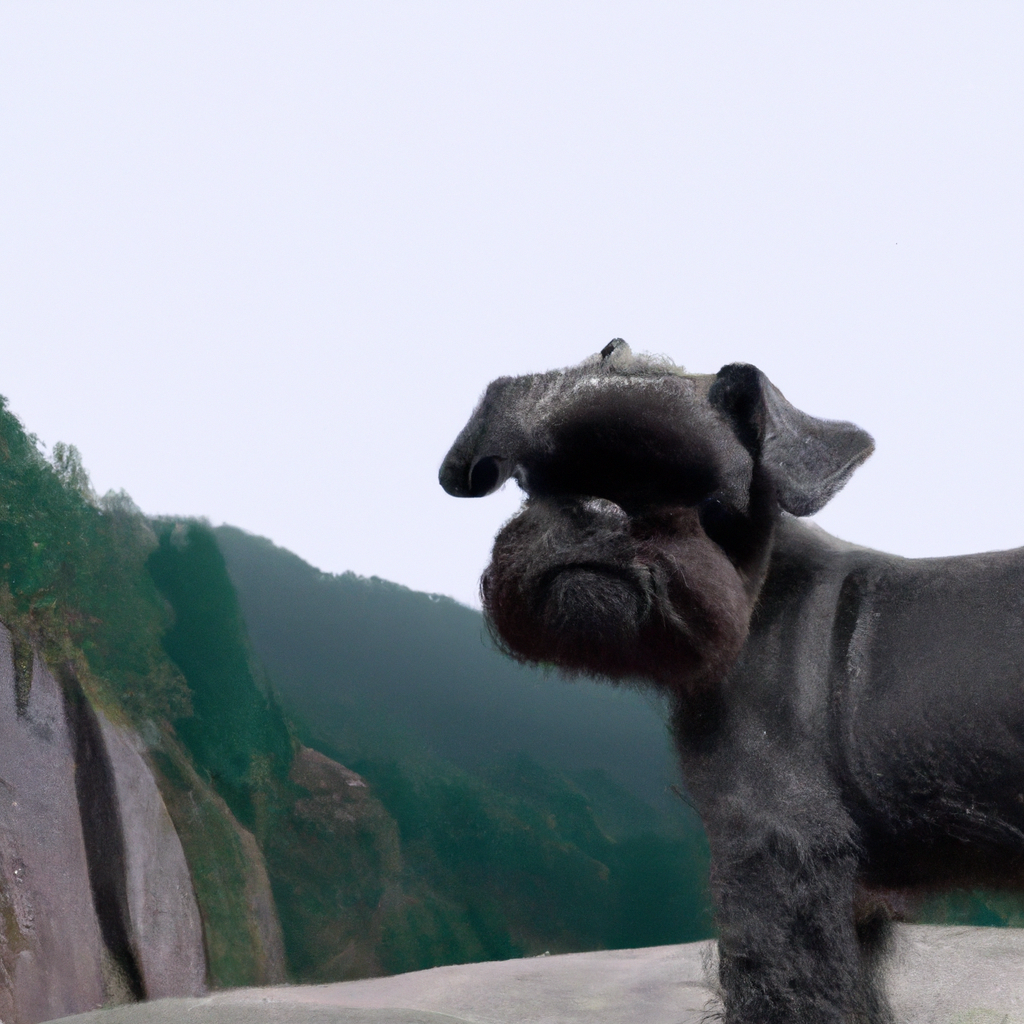
Affenpinschers, often referred to as “monkey dogs” due to their distinct primate-like appearance, are a unique breed of toy dogs that have captured the hearts of many dog lovers worldwide. But have you ever wondered where these adorable little creatures originated from? Let’s take a journey back in time and explore the German origins of Affenpinschers.
The Affenpinscher breed has a rich history that dates back to the 17th century in Germany. The name “Affenpinscher” itself is a German term, which when translated to English, means “monkey terrier.” This is a fitting name, given their monkey-like faces and terrier-like tenacity. These dogs were initially bred to serve as ratters, hunting and killing rats and other small vermin in homes, stables, and shops. Their small size and agile nature made them perfect for this role.
As time went on, Affenpinschers began to gain popularity not just for their ratting skills, but also for their unique looks and charming personalities. They were especially favored by ladies of the court, who found their monkey-like faces and playful demeanor endearing. This led to Affenpinschers being bred to be smaller and more companion-like, transitioning from working dogs to lapdogs.
However, it wasn’t until the late 19th century that Affenpinschers were officially recognized as a breed in Germany. The breed standard was established, defining the ideal characteristics, temperament, and appearance of an Affenpinscher. This included their small size, round eyes, bushy eyebrows, and shaggy coat, all of which contribute to their distinctive monkey-like appearance.
Despite their German origins, Affenpinschers remained relatively unknown outside of their homeland until the early 20th century. It was around this time that they were first introduced to the United States. American dog lovers quickly fell in love with these little “monkey dogs,” and by the mid-20th century, Affenpinschers had become a popular breed in the US.
However, the breed’s popularity took a hit during World War II, when many dog breeds faced near extinction due to the hardships of the war. Thankfully, dedicated breeders worked hard to revive the breed, and by the 1950s, Affenpinschers had made a successful comeback.
Today, Affenpinschers are cherished for their unique looks, playful personalities, and loyal nature. They are known to be fearless, inquisitive, and full of energy, making them a delightful addition to any family. Despite their small size, they are also known to be excellent watchdogs, a trait that harks back to their origins as ratters.
In conclusion, the Affenpinscher breed has a rich and fascinating history that is deeply rooted in Germany. From their early days as ratters to their transformation into beloved companion dogs, Affenpinschers have certainly come a long way. Their journey from the stables and shops of Germany to the living rooms of dog lovers worldwide is a testament to their enduring charm and appeal. So, the next time you see an Affenpinscher, remember that you’re not just looking at a cute little dog, but a breed with a history as unique and captivating as its appearance.
Affenpinschers: A Journey Back to Their Homeland
Affenpinschers, with their distinctive monkey-like faces and playful personalities, have captured the hearts of dog lovers worldwide. But have you ever wondered where these charming little creatures originated from? Let’s embark on a journey back to their homeland and discover the rich history of this unique breed.
The Affenpinscher, affectionately known as the “Monkey Dog,” traces its roots back to Germany in the 17th century. The name itself is a combination of the German words “Affen,” meaning monkey, and “Pinscher,” meaning terrier. This breed was initially developed to serve as a ratter, a dog skilled in catching rats and other vermin. Their small size and agile nature made them perfect for this role, especially in urban areas where rats were a significant problem.
In the early days, Affenpinschers were larger than the ones we see today. They were about 12 to 13 inches tall, which was an ideal size for a ratter. However, as time passed and their roles shifted from ratters to companions, breeders started to prefer smaller sizes. This led to the Affenpinscher’s size being gradually reduced while maintaining its robust and fearless nature.
The Affenpinscher’s journey from a working dog to a beloved companion is an interesting one. As they moved from the stables and shops into the homes, their unique appearance and lively personality quickly won over the hearts of the German bourgeoisie. Their popularity grew, and they began to be featured in various forms of art, including paintings and porcelain figurines, reflecting their status as a fashionable and desirable pet.
However, it wasn’t until the late 19th century that the Affenpinscher breed as we know it today began to take shape. Breeders started to standardize the breed, focusing on its distinctive features such as the rough, shaggy coat, the monkey-like face, and the confident, fearless demeanor. The first breed standard was written in 1902, and the Affenpinscher was officially recognized by the German Kennel Club.
The Affenpinscher’s popularity continued to grow, and it wasn’t long before they made their way across the Atlantic. The first Affenpinscher was registered with the American Kennel Club (AKC) in 1936. However, World War II put a halt to the breed’s growth in the United States. It wasn’t until the 1950s that the breed began to regain its popularity, thanks to the efforts of dedicated breeders.
Today, the Affenpinscher is cherished worldwide for its unique appearance and lively personality. Despite their small size, these dogs are known for their courage and determination, traits that hark back to their days as ratters. They are also known for their loyalty and affection towards their families, making them excellent companions.
In conclusion, the Affenpinscher’s journey from the streets and stables of 17th century Germany to the homes of dog lovers around the world is a testament to their enduring appeal. Their unique blend of charm, courage, and loyalty has ensured their place in the hearts of many, and their rich history only adds to their allure. So, the next time you look into the expressive eyes of an Affenpinscher, remember the long journey this breed has taken to be where it is today.
Understanding the Origins of Affenpinschers
Affenpinschers, often referred to as “Monkey Terriers” or “Monkey Dogs” due to their distinct primate-like appearance and playful nature, are a unique breed of toy dogs that have captured the hearts of many dog lovers worldwide. But have you ever wondered where these adorable little creatures originated from? Let’s delve into the fascinating history of Affenpinschers to understand their origins better.
The Affenpinscher breed has a rich history that dates back to the 17th century, originating from Germany. The name ‘Affenpinscher’ itself is a German term, which when translated to English, means ‘Monkey Terrier.’ This name was given to them due to their monkey-like faces and terrier-like ruggedness. They were initially bred to be ratters, hunting and killing rats, mice, and other small vermin in homes, stables, and shops. Their small size and agile nature made them perfect for this role.
As time passed, Affenpinschers evolved from being ratters to becoming companion dogs for ladies in urban households. Their small size, coupled with their unique appearance and playful nature, made them a favorite among the ladies of the house. They were often seen in the company of women, providing companionship and entertainment with their antics.
Interestingly, Affenpinschers are considered the progenitors of other small European dog breeds such as the Brussels Griffon and the Miniature Schnauzer. The breeders, in their quest to create new breeds, often crossbred Affenpinschers with Pugs, German Pinschers, and German Silky Pinschers. This led to the creation of these new breeds, each carrying the distinct traits of the Affenpinscher.
The popularity of Affenpinschers grew over time, and they began to appear in dog shows in the late 19th century. The first Affenpinscher to be registered by the American Kennel Club (AKC) was a dog named ‘Banbury Cross of Encore’ in 1936. However, the breed’s popularity took a hit during World War II due to breeding restrictions and scarcity of resources. It was only in the 1950s that the breed began to regain its popularity, thanks to dedicated breeders who worked tirelessly to revive the breed.
Today, Affenpinschers are cherished for their unique appearance, intelligence, and playful nature. They are known for their loyalty and protective nature, making them excellent companions. Despite their small size, they are fearless and often unaware of their size when it comes to confronting larger dogs or threats.
In conclusion, the Affenpinscher breed has a rich and fascinating history that reflects its journey from being a ratter in German households to becoming a beloved companion dog worldwide. Their unique appearance, coupled with their playful and fearless nature, has endeared them to dog lovers across the globe. So, the next time you see an Affenpinscher, you’ll know the rich history and heritage that this little ‘Monkey Dog’ carries with it.
The Fascinating History of Affenpinschers’ Origins
Affenpinschers, often referred to as “monkey dogs” due to their distinct primate-like appearance, have a rich and fascinating history that dates back several centuries. These small, sturdy dogs, known for their mischievous personality and expressive faces, have a lineage that is as intriguing as their unique looks.
The Affenpinscher breed originated in Germany in the 17th century. The name “Affenpinscher” translates to “monkey terrier” in German, a fitting name given their monkey-like faces and terrier-like tenacity. Initially, these dogs were larger than the Affenpinschers we know today, and they were primarily used as ratters on farms and in homes. Their small size and agile bodies made them excellent at hunting and killing rats and other vermin, a task they performed with great enthusiasm and efficiency.
As time went on, Affenpinschers began to be bred for a different purpose. In the 18th and 19th centuries, they started to become popular as companion dogs for ladies of the European nobility. To better fit this new role, breeders began to selectively breed Affenpinschers to be smaller, resulting in the toy-sized breed we are familiar with today. Despite their reduced size, they retained their fearless, energetic nature, making them entertaining and loyal companions.
The Affenpinscher’s journey didn’t stop in Europe. In the late 19th century, the breed made its way across the Atlantic to the United States. The American Kennel Club (AKC) officially recognized the Affenpinscher in 1936, but the breed didn’t gain significant popularity until after World War II. Today, while they may not be as well-known as some other breeds, Affenpinschers have a dedicated following of enthusiasts who appreciate their unique appearance and spirited personality.
Interestingly, Affenpinschers also played a crucial role in the development of other breeds. They are considered one of the oldest toy breeds and their genes have contributed to the evolution of other small breeds such as the Brussels Griffon and the Miniature Schnauzer. This influence further highlights the significance of the Affenpinscher in the canine world.
Despite their long history, Affenpinschers remain relatively rare. This scarcity, however, only adds to their allure. Their distinctive looks, combined with their playful and affectionate nature, make them a beloved choice for those lucky enough to own one. They may be small in size, but their impact on the hearts of their owners is immeasurable.
In conclusion, the Affenpinscher’s journey from German ratter to noble companion to American pet is a testament to the breed’s adaptability and enduring appeal. Their history is a fascinating tale of evolution, migration, and influence. Whether they’re keeping a farm free of vermin, sitting on the lap of a European noblewoman, or playing fetch in a modern American backyard, Affenpinschers bring joy and companionship wherever they go. Their origins may be rooted in the past, but their future looks bright as they continue to charm and delight dog lovers around the world.
From Germany to the World: The Story of Affenpinschers
Affenpinschers, often referred to as “Monkey Terriers” or “Monkey Dogs” due to their distinct primate-like appearance, have a rich and fascinating history that dates back several centuries. These small, sturdy dogs, known for their mischievous personality and expressive faces, originated from Germany, and their journey from their homeland to the rest of the world is a tale worth telling.
The Affenpinscher’s story begins in the 17th century in Germany, where they were initially bred to serve as ratters in homes, stables, and shops. Their small size and agile nature made them excellent at hunting and killing rats and mice, a task they performed with remarkable efficiency. The name “Affenpinscher” itself translates to “Monkey Terrier” in German, a nod to their unique, monkey-like faces and terrier-like tenacity.
As time passed, the Affenpinscher’s role began to evolve. From being efficient ratters, they transitioned into beloved companions and house pets. Their endearing looks, coupled with their playful and adventurous spirit, made them a favorite among the German elite. By the late 18th and early 19th centuries, Affenpinschers were often seen in the company of ladies of high society, serving as both companions and fashionable accessories.
The breed’s popularity wasn’t confined to Germany for long. In the late 19th century, Affenpinschers began to make their way across Europe, capturing hearts wherever they went. They were particularly well-received in France, where they were often depicted in paintings by famous artists of the time. The French affectionately referred to them as “Diablotins Moustachus,” which translates to “moustached little devils,” a testament to their playful and mischievous nature.
The Affenpinscher’s journey didn’t stop at Europe’s borders. By the early 20th century, these charming little dogs had crossed the Atlantic and made their way to the United States. The American Kennel Club officially recognized the Affenpinscher as a breed in 1936, further cementing their place in the hearts of dog lovers across the country.
Despite their popularity, the number of Affenpinschers dwindled during World War II, as breeding non-military dogs was not a priority. However, after the war, dedicated breeders worked tirelessly to revive the breed. Today, while they may not be as common as other breeds, Affenpinschers continue to be cherished for their unique looks and lively personalities.
From their humble beginnings as ratters in Germany to their status as beloved pets worldwide, Affenpinschers have certainly come a long way. Their journey is a testament to their adaptability, resilience, and undeniable charm. Whether they’re keeping homes free of pests, accompanying ladies of high society, or simply being a loving companion to their owners, Affenpinschers have proven time and again that they are more than just their monkey-like faces. They are a breed with a rich history and a bright future, and their story is far from over.
So, the next time you see an Affenpinscher, remember that you’re not just looking at a cute, small dog. You’re looking at centuries of history, a journey from Germany to the world, and a testament to the enduring appeal of this remarkable breed.Affenpinschers originated from Germany.

